Hanukkah (or Chanukah) is the Jewish festival of lights.
It lasts for eight days and, in 2023, will be celebrated from 7 to 15 December. Judaism follows a lunar calendar, so holiday dates shift every year. Hanukkah is always either in November or December.
If you’ve heard of this holiday but don’t know much about it, fear not – we have picked six words that will give you a good understanding of the Hanukkah story and how Jewish families celebrate.
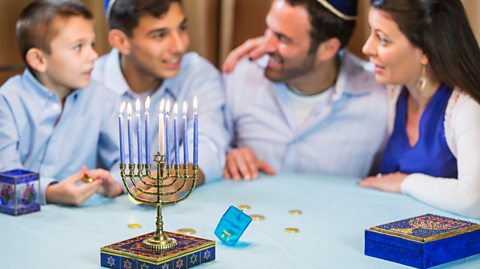 Image source, kali9
Image source, kali91. Hanukkiah
The most famous symbol of Hanukkah is the hanukkiah, the nine-branched candelabra which is lit each night, and can often be seen in house windows. Hanukkah celebrations are centred around lighting the hanukkiah, and families will gather to light the candles together.
So why this tradition? The story of Hanukkah stretches back over 2,000 years to a time when the Jewish people living in and around Jerusalem were ruled by Syrian-Greeks (more on this later). During a war between the two peoples, the Holy Temple of Jerusalem had been heavily damaged and so had to be repaired and rededicated to God. The word Hanukkah actually means dedication.
Within the Holy Temple in Jerusalem was a menorah, a candelabra with seven branches. It’s one of the oldest and most important symbols in Judaism. The story goes that, when looking for oil to light the menorah, there was only enough to light it for one day. But then, a miracle happened: the candles somehow burned for eight days. This is known as the miracle of the oil, and it’s commemorated each year during Hanukkah.
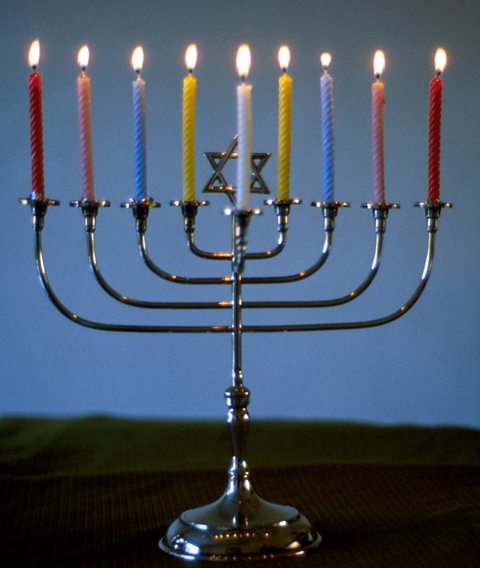 Image source, BBC
Image source, BBC2. Shammash
A ninth candle (placed in the centre of the hanukkiah) is used to light all the others and is known as the shammash or helper candle. Either a wax candle or oil-fuelled lights can be used, traditionally olive oil.
The candles are lit in a particular order: on the first night of Hanukkah, the candle furthest to the right is the only one lit. The following night, the second furthest candle to the right is lit, and then the furthest again. This pattern continues across all eight nights.
Before the candles are lit, several blessings are recited in Hebrew.
 Image source, BBC
Image source, BBC3. Dreidel (or sevivon)
A dreidel or sevivon is a type of spinning top which has Hebrew letters inscribed on each of the four sides. Together, the letters create an acronym for the phrase ‘A great miracle happened there’ (Nes Gadol Haya Sham). This is a reference to the Holy Temple in Jerusalem.
Each players begins with the same number of items (chocolate coins, nuts sweets or similar), two of which are placed in the centre.
Taking it in turns, each player spins the dreidel. Depending on which side the dreidel lands on, they must then either add another piece to the central pile, take half of what is there, take everything that is there, or do nothing. If you fancy making your own dreidel, here's an easy template.
There may be a deeper meaning behind this game. It is thought that when the Jewish people were living under the rule of the Syrian Greeks, they would read the Torah in secret. If they feared they were about to be discovered, they would hide the Torah and bring out the dreidel to play.
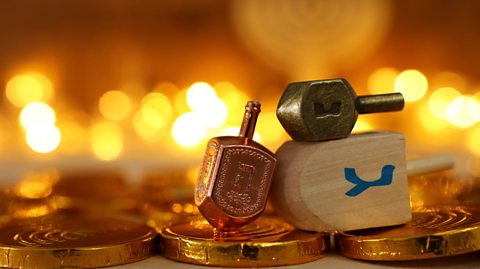 Image source, tomertu
Image source, tomertu4. Hanukkah ‘gelt’
Hanukkah gelt means ‘Hanukkah money’ in Yiddish. Families often give children chocolate coins as a small present each night, although some might receive real money or other gifts. Chocolate coins are often used when playing dreidel.
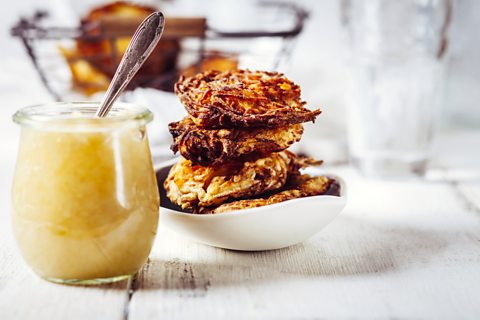 Image source, Westend61
Image source, Westend615. Fried food
Fried food is a common feature of Hanukkah celebrations in the UK, due to the significance of oil. By eating food cooked in oil, Jewish people remember the miracle of the oil in the Holy Temple.
A type of fried potato pancake known as a latke is particularly popular, as are deep-fried doughnuts filled with fruit jelly (sufganiyot). To create a latke, grated potato and onion are mixed with eggs and flour and fried, forming a potato pancake.
 Image source, Westend61
Image source, Westend616. Maccabees
The Syrian-Greek King Antiochus IV had banned Jewish practices such as observance of the Sabbath and circumcision, and had a statue of the Greek god Zeus installed in the Holy Temple in Jerusalem.
A group of Jewish people, known as the Maccabees, who wanted to restore Jewish religious practices and traditions, are said to have fought the powerful Syrian-Greek army over the course of three years.
The Maccabees were initially led by Mattathias, a Jewish priest who fled with his five sons into the surrounding countryside, where they began guerrilla warfare against the Syrian-Greeks, despite an initial lack of resources.
Following Mattathias’ death, his son Judas (or Judah) took over the military command and led the Maccabees to several victories. Finally, they were able to take control of Jerusalem and re-dedicate the Holy Temple.
Celebrating Passover while staying at home
With the UK in lockdown, Jewish people are finding different ways to celebrate Passover this year.
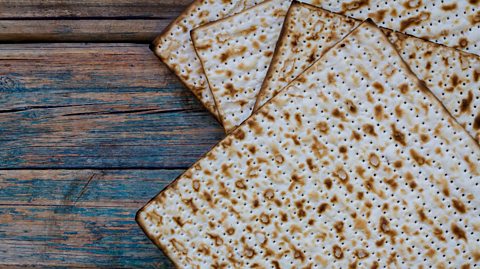
Five Christmas mysteries unwrapped
Have you ever wondered what makes Christmas so Christmassy? Here are five Christmas mysteries unwrapped.
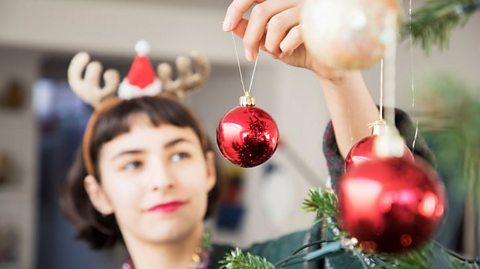
Quiz: Who’s that Santa Claus?
Do you know your Santa from your Père Noël ? Take our quiz to find out.
